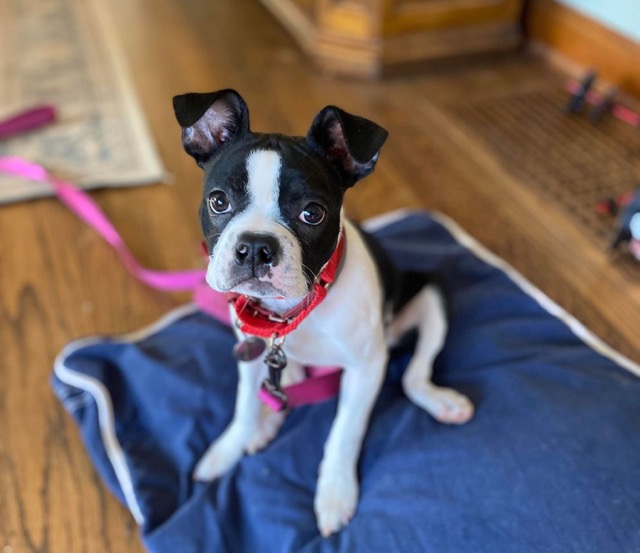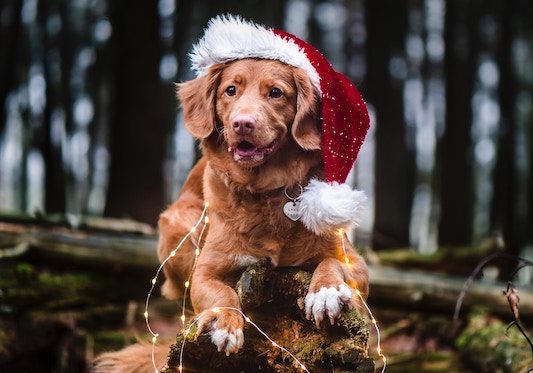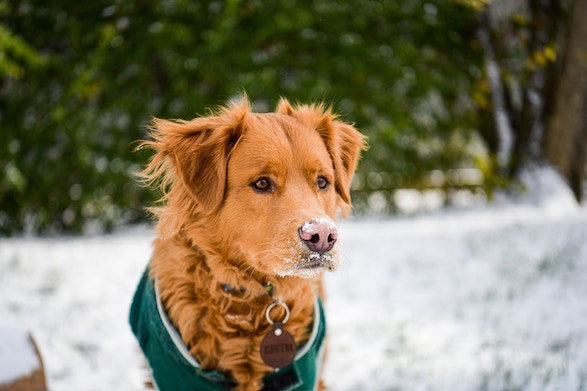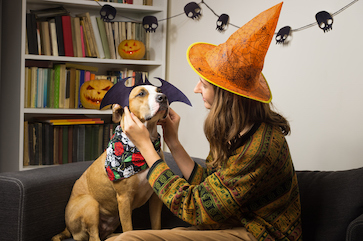The “place” command is an all-time favorite for our clients. This command can be practiced and used when guests come over, during dinner, when you are watching tv, etc. It allows your puppy to have a designated comfortable spot in your home, where they can chew on toys, sleep, and be out from under your feet. Continue reading as we cover a step-by-step procedure on how you can teach your puppy the “place” command.
Vocabulary words
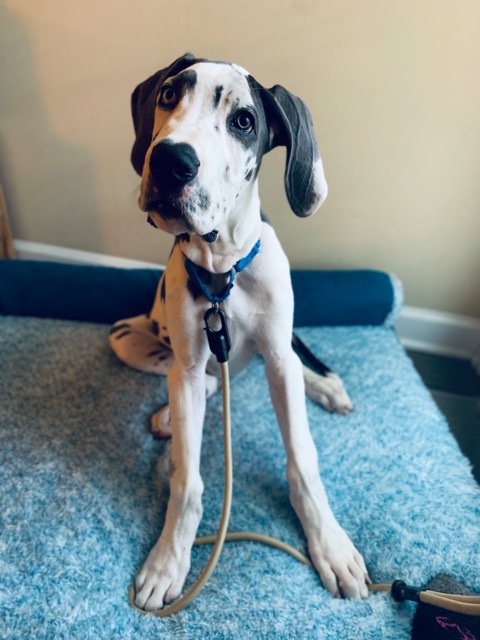
Bridge word – “good”
We introduce a specific word (“good”) where there is a one-to-one ratio of food to your puppy. Once your puppy completes a command we want to reward them for complying with the command and we are able to do this by saying “good” to capitalize on the specific moment the command was completed. The reason we call this a bridge word is that it bridges the gap between the completion of the command and when the treat is given.
Release word – “free”
Any command that your puppy is given should not be broken until you release them from the command. Our release word is “free.”
Praise – “Good job or good girl/boy”
We are our puppy’s cheerleaders in the sense we want to give them as much motivation as possible to let them know they are doing a good job. Praise can be given as much as possible, but differs from the bridge word “good” as it is not associated with receiving food.
What you need
A few things you will need to start teaching your puppy “place” are as follows:
- A bed or cot
- A treat bag
- Kibble or high-value treats
- Martingale collar
- Leash
Where to start
- Put the bed or cot in an open area.
- Put your puppy’s collar on and attach their leash.
- Get your puppy’s attention and put a treat or piece of kibble, depending on how food-motivated your puppy is, easily visible in between your thumb and index finger.
- Stand next to the bed and slowly lure your puppy onto the bed. Your puppy should follow your hand motion onto the bed.
- The second your puppy’s fourth paw touches the bed, bridge “good” and feed your puppy the treat.
- Release your puppy from the command by saying “free” and tossing a treat away from the bed.
- After 15-20 successful trials of your puppy reliably going onto the bed, increase the difficulty by removing the piece of food from your hand and repeating steps 4-6.
- When you increase the difficulty, if at any step your puppy struggles after 3 consecutive trials, return to the previous step and continue practicing at that level for 10-15 trials to allow your puppy to be successful.
- After 15-20 successful trials of your puppy reliably going onto the bed, start introducing the verbal command and repeat steps 4-6.
- When you increase the difficulty, if at any step your puppy struggles after 3 consecutive trials, return to the previous step and continue practicing at that level for 10-15 trials to allow your puppy to be successful.
- Get your puppy’s attention and say “{your puppy’s name}, place” and immediately lure your puppy onto the bed without a piece of food in your hand.
- As your puppy starts associating the word “place” with the bed, stop using the hand signal and have your puppy rely on the verbal command.
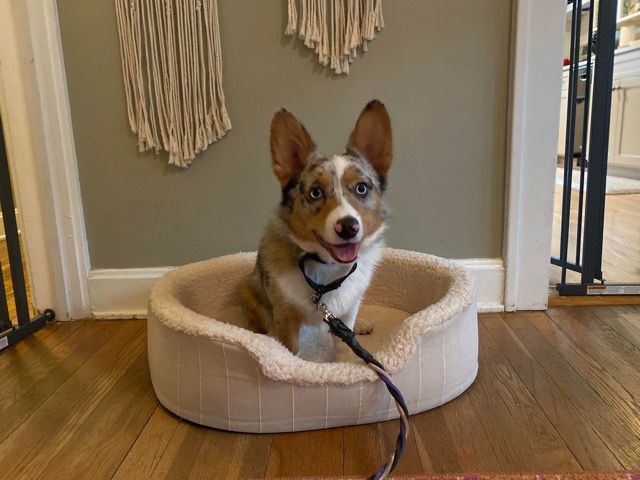
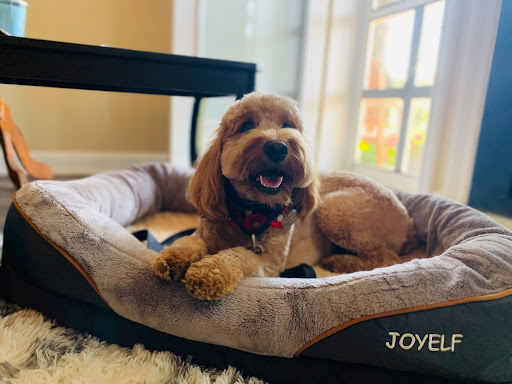
Creating distance
Once your puppy is on the bed, start working on the three D’s (distance, duration, and distraction) (e.g. walk 2 ft away from the bed, sit on the couch, open the front door).
- When you are at your farthest point (e.g. 2 ft, 5 ft, 10 ft, 15 ft) from the bed, bridge “good” and return to your puppy to feed them a treat.
- After an amount of time has passed (e.g. 10 seconds, 30 seconds, 1 minute, etc.), bridge “good” and return to your puppy to feed them a treat.
- Increase the difficulty of your tasks (e.g. sitting on the couch, washing dishes, eating at the table) bridge “good” and return to your puppy to feed them a treat.
- To set your puppy up for success, bridge “good” and feed your puppy frequently. This will be necessary to achieve longer durations of time on the bed.
If a situation is too difficult for your puppy and they break the command early, recreate the situation that caused your puppy to break the command and bridge and treat sooner so they can be successful. Then slowly increase the difficulty.
Your puppy will be able to maintain the command with little to no bridging and feeding as long as you continue to practice and be consistent!
Troubleshooting
- If you have a toy-breed puppy, start by kneeling next to the bed instead of standing.
- If your puppy is not food motivated and will not follow your hand holding their kibble, increase the value of food from kibble to high-value treats (e.g. chicken, squeeze cheese, hotdogs, jerky). Once your puppy starts following your hand signal, you can decrease the value of the food you are offering back down to kibble.
- If your puppy is a star and complies with the verbal command for the first time or complies with the command quickly, give them a jackpot of treats, by feeding them three small treats one after the other.
Good luck training! If you have any questions or want to teach your puppy additional commands, contact us today to learn about the puppy obedience programs we offer!
